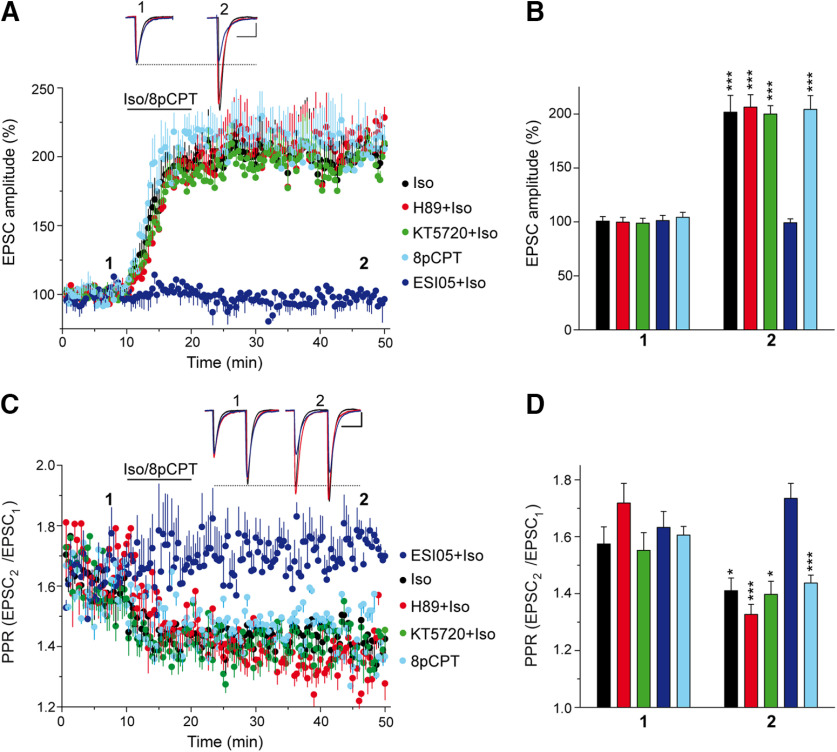Figure 4.
Isoproterenol potentiation of synaptic transmission at PF–PC synapses involves Epac but not PKA-dependent signaling. A, The βAR agonist isoproterenol (100 μm, 10 min) induced a sustained increase in the EPSC amplitude that was insensitive to the PKA inhibitors H-89 (10 μm, 30 min) and KT-5720 (2 μm, 30 min). However, this response was absent in the presence of the Epac2 inhibitor ESI 05 (10 μm, 30 min), and it was mimicked by the Epac activator 8pCPT (50 μm, 10 min). B, Quantification of the changes in EPSC amplitude measured 40 min after isoproterenol/8pCPT application (2). Isoproterenol in the absence (n = 11 cells/11 slices, 5 mice, t = 6.344, df = 11) or in the presence of H-89 (n = 11 cells/11 slices/5 mice, t = 4.496, df = 11), KT-5720 (n = 11 cells/11slices/5 mice, t = 5.945, df = 11), or ESI 05 (n = 10 cells/10 slices/4 mice, t = 0.3760, df = 11), or 8pCPT alone (n = 12 cells/12 slices/5 mice, t = 4.850 df = 13). All the data were compared with the respective values before isoproterenol or 8pCPT application (1). C, Changes in the PPR (EPSC2/EPSC1) induced by isoproterenol or 8pCPT in the different conditions. D, Quantification of the changes in the PPR induced by 8pCPT (t = 4.230, df = 21) and isoproterenol (2) in the absence (t = 2.219, df = 20) or presence of H-89 (t = 4.941, df = 18), KT-5720 (t = 2.133, df = 8) or ESI 05 (t = 1.28, df = 18), and relative to the respective basal values (1). EPSC sample traces (A, C) represent the mean of six consecutive EPSCs at 0.05 Hz taken before and 40 min after treatment. Calibration: 50 pA and 15 ms. The data represent the mean ± SEM.

